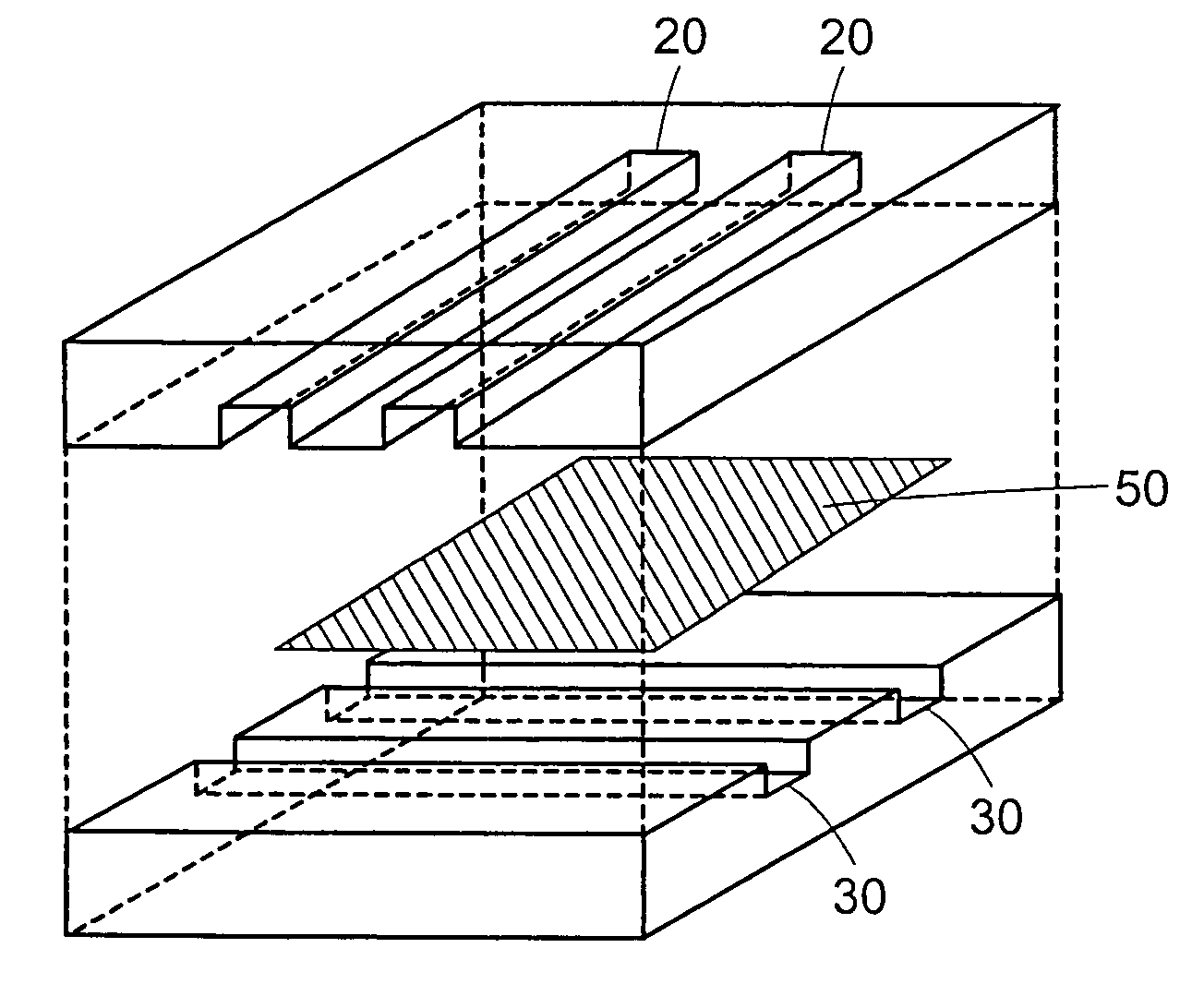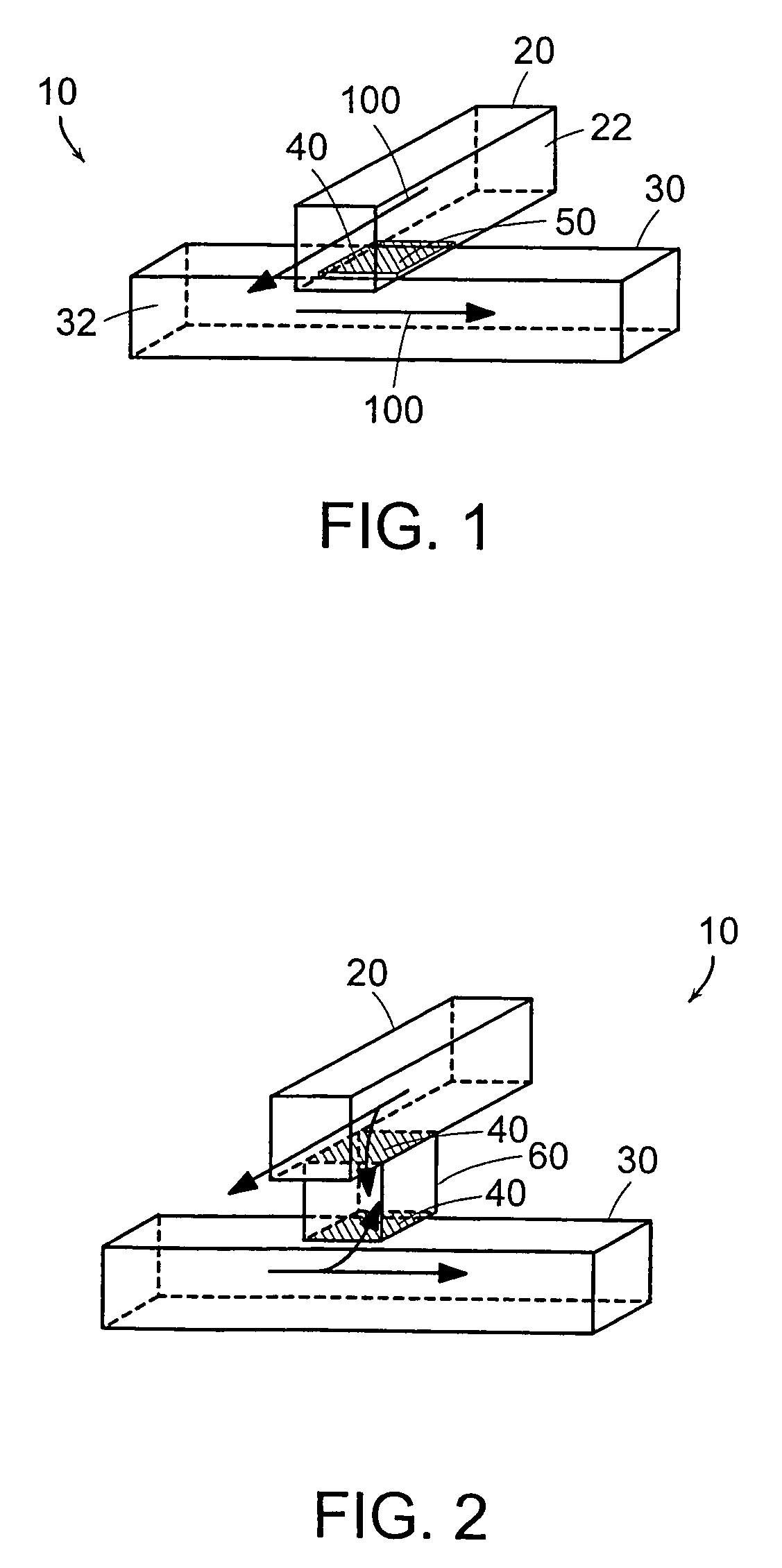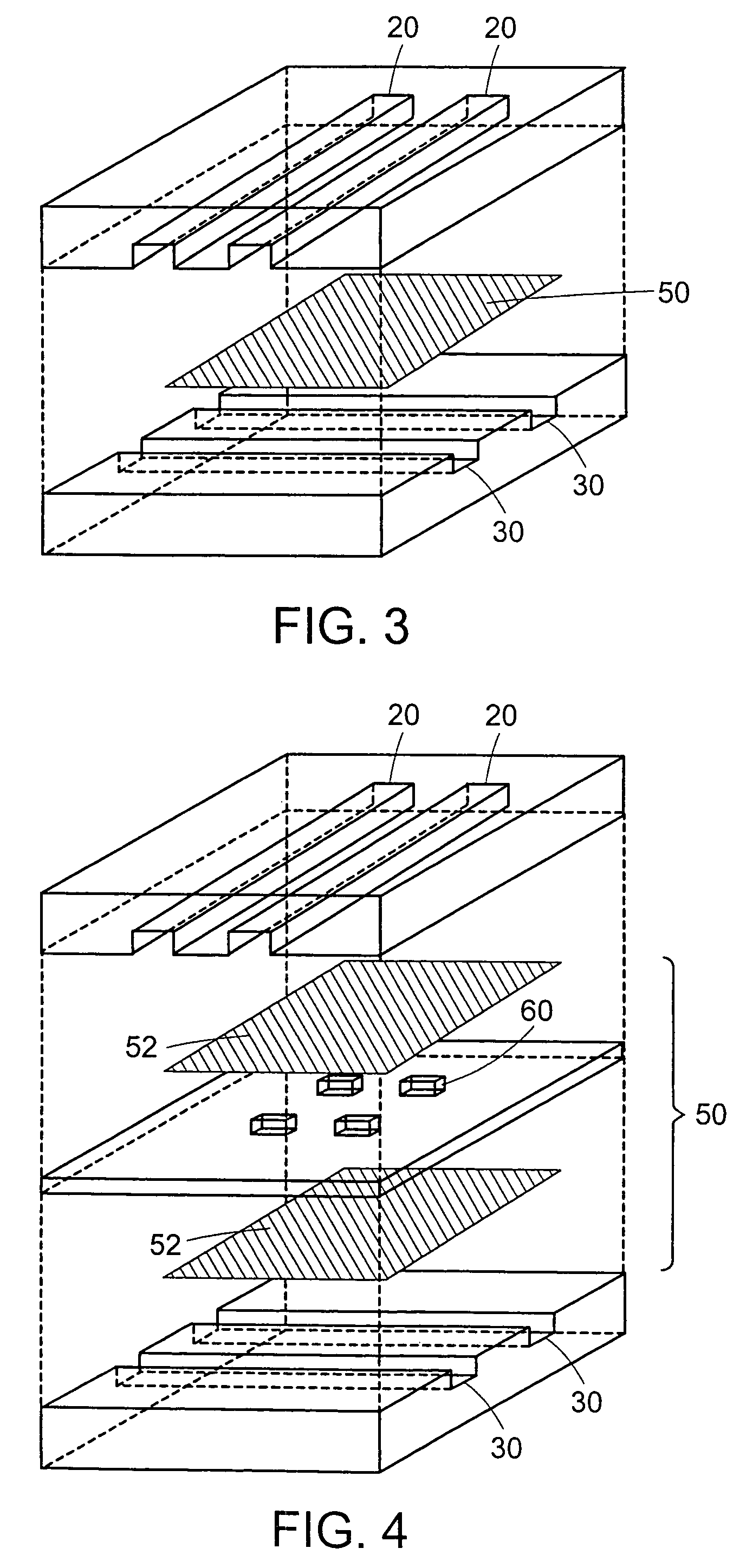Fluidic arrays and method of using
- Summary
- Abstract
- Description
- Claims
- Application Information
AI Technical Summary
Benefits of technology
Problems solved by technology
Method used
Image
Examples
example 1
[0114]To demonstrate that individual contact regions in an array of contact regions may be addressed independently, calcium(II) ions were detected in a fluid path of one layer of a 5×5 array using a fluorescent probe, fluo-3 (Molecular Probes, Eugene, Oreg.), in a fluid path in the other layer; the other eight fluid paths were filled with water, as illustrated in FIGS. 8 and 9. The fluid paths were 200 microns wide. Fluorescence was observed only at the contact regions of the fluid paths containing calcium(II) ions and fluo-3. FIG. 8 illustrates that where the convection controller comprised a single polycarbonate membrane 10 micrometers thick with 0.1 micrometer vertical through-holes there was weak flow through the contact region due to unequal pressures and diffusion that led to leakage of fluorescent calcium(II) / fluo-3 complex into the fluid path. However, because the signal is stronger at the contact region, convection through the membrane is demonstrated to be much lower than ...
example 2
[0118]A fluidic system with a convection controller including a space in the form of a microwell was used to demonstrate that detection of bacteria by agglutination of test beads was possible, as illustrated in FIG. 10. The convection controllers included two polycarbonate membranes 52 with approximately 1.0-μm pores separating a microwell from two upper fluid paths 20, containing Staphyloslide™ Latex beads (VWR Pittsburgh, Pa.), and a bottom fluid path 30, containing Staphylococcus aureas. The membranes were permeable to both beads and bacteria. The upper fluid paths were filled with two types of blue Staphyloslide™ Latex beads. The first fluid path was filled with a suspension of test beads coated with human fibrinogen and immunoglobulin G (IgG) on their surfaces.
[0119]The second fluid path was filled with a suspension of control beads without fibrinogen or IgG on their surfaces. The bottom fluid path was filled with a suspension of Staphylococcus aureas (ca. 109 bacteria / mL). The...
example 3
[0121]To demonstrate the use of a system that incorporated a functional gel, a combination of colorimetric and fluorometric assays in a 5×5 fluid path array were used, as illustrated in FIGS. 12-15. The substrates were first immobilized in agarose gels 34 in one set of parallel fluid paths, then the solutions of enzymes were injected into the other set of fluid paths. The agarose did not flow and, therefore, balancing of pressures within the fluid paths was not required. In this experiment, the enzymes diffused from their respective fluid paths, through a membrane convection controller, as described in Example 1, and into the fluid paths that contained the gels with the substrates. Chromogenic substrates 5-bromo-4-chloro-3-indolyl galactoside (X-Gal) and a combination nitro blue tetrazolium / 5-bromo-4-chloro-3-indolyl phosphate (NBT / BCIP) (all from Molecular Probes, Eugene, Oreg.) were used to detect the activities of β-galactosidase (β-gal) and alkaline phosphatase (AP), respectivel...
PUM
 Login to View More
Login to View More Abstract
Description
Claims
Application Information
 Login to View More
Login to View More - R&D
- Intellectual Property
- Life Sciences
- Materials
- Tech Scout
- Unparalleled Data Quality
- Higher Quality Content
- 60% Fewer Hallucinations
Browse by: Latest US Patents, China's latest patents, Technical Efficacy Thesaurus, Application Domain, Technology Topic, Popular Technical Reports.
© 2025 PatSnap. All rights reserved.Legal|Privacy policy|Modern Slavery Act Transparency Statement|Sitemap|About US| Contact US: help@patsnap.com



